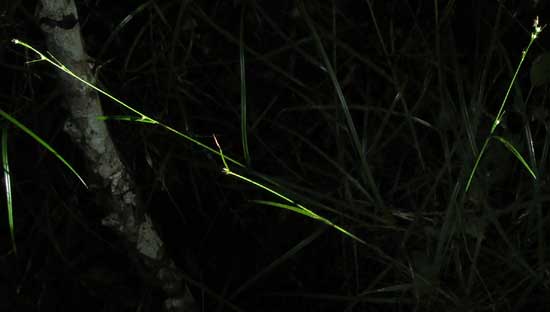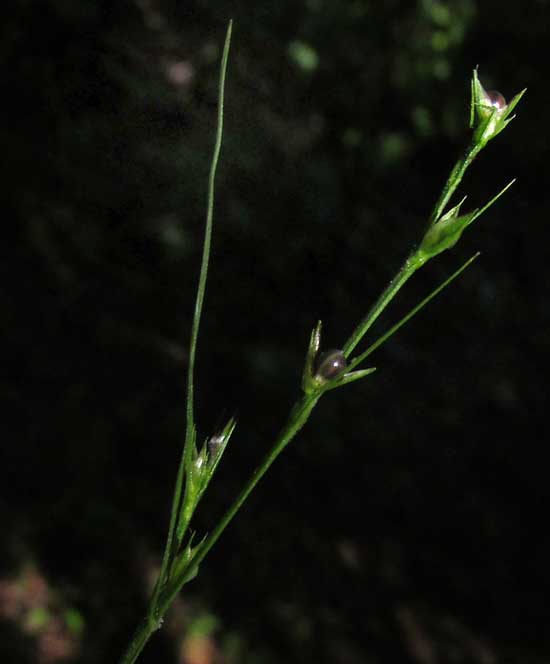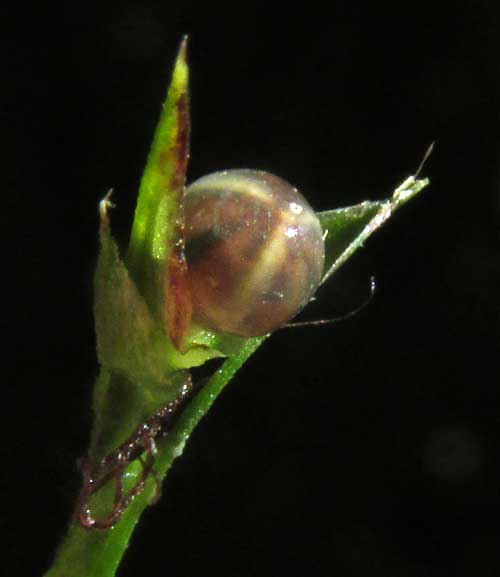Excerpts from Jim Conrad's
Naturalist Newsletter
from the August 7, 2016 Newsletter issued from Hacienda Chichen Resort beside Chichén Itzá Ruins; limestone bedrock; elevation ~39m (~128ft), N20.675°, W88.569°; central Yucatán state, MÉXICO
NUTRUSH
Along a shadowy trail through dense forest, a knee-high, especially spindly looking little grass-like plant was enjoying its five minutes of sunbeam, as shown below:

Up close, where I'd expected flattish grass spikelets, something else turned up, looking somewhat like rush flowers, genus Juncus, commonly seen in marshes and along paths up North. Below, you can see the rush-like flowering head:

In that picture, what's that spherical, shiny, blackish thing near the center? A close-up shows it very well below:

That kind of fruit isn't something a rush would produce, and it's not part of a spikelet of the kind produced in the Grass Family. This is a member of the Sedge Family, the Cyperaceae, and the distinctive genus Scleria, whose big field mark is that its fruits look like what's in our picture -- they're spherical to egg-shaped, usually whitish, hard-covered, achene-type fruits normally perched atop a hardened pad known as the hypogynum. In the picture the white hypogynum is seen glistening beneath the achene.
This is SCLERIA LITHOSPERMA, found in dry woods and thickets on limestone soils in the tropics and subtropics nearly worldwide. It also shows up rarely in Florida and Louisiana. In Florida it's classified as an endangered native species and called the Florida Keys Rush, despite its not being in the Rush Family. A general name for species in the genus Scleria is nutrush.
The rhizomes of Scleria lithosperma are fragrant when fresh. Especially in India where about 28 species of Scleria are known, species of the genus often are used medicinally. The Springer Illustrated Dictionary Indian Medicinal Plants reports the plant as useful for urinary problems, and that a tea, or decoction, of the root is given to the mother after childbirth. Tops of the plant are administered to children with "enlarged stomachs."